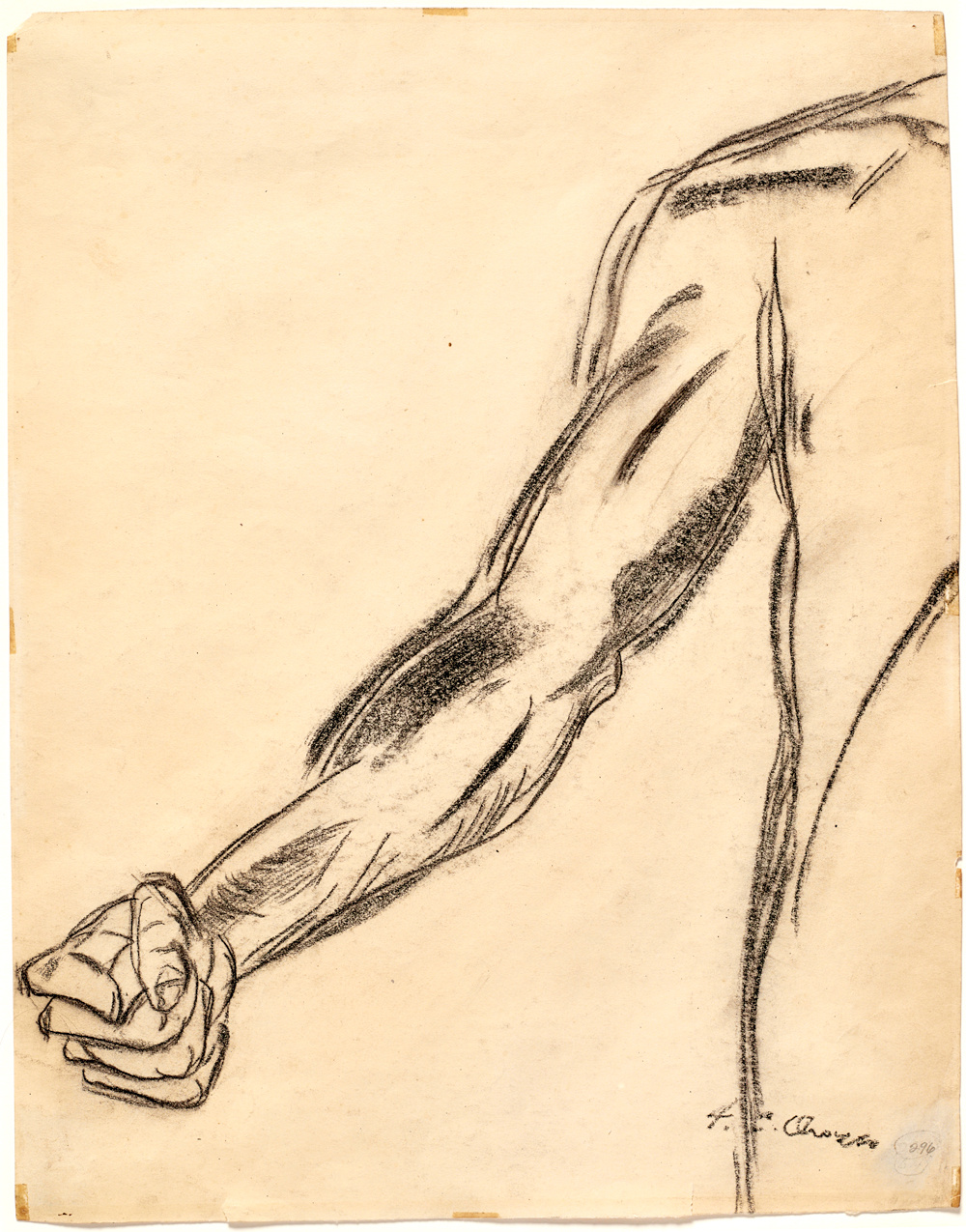Introduction
The art of José Clemente Orozco (1883 – 1949) is legendary. His monumental public murals—architectural in scale, overflowing with drama, and electrified by stylistic invention—have inspired generations of artists across the globe. Orozco was one of “Los Tres Grandes” Mexican muralists. Along with Diego Rivera and David Alfaro Siqueiros, he created images that helped redefine national identity after the Mexican Revolution. Widely admired for his artistic virtuosity and his stance against social injustice, Orozco was a keen observer of humankind. His moral vision was shaped by the horrors of civil war and the Great Depression, as well as by the two world wars that marked his lifetime. “Painting assails the mind,” he said, “it persuades the heart.”
Yet behind the loud, rebellious call of his murals stands Orozco’s quiet practice of figure drawing. His intimate figure studies offer a glimpse into the private, intuitive side of his artistic process. They are the still, small voice amid the turbulent force of his art. These modest works reveal Orozco’s classical skill as a draftsman; his sure hand and fluid line; and his deep study of art history. Here, we see Orozco choreographing the human body—the tension of muscles or the dynamism of a gesture—and enlisting just an arm or a hand to play a role in his narrative. The epic stories of Orozco’s murals began with, and speak through, the anatomy of the human figure.
Drawing was fundamental to Orozco. As a teenager, he was inspired by the graphic images of José Guadalupe Posada, whom he saw at work in the print shop on his daily path to school. He soon enrolled in night classes in drawing at the Academia de San Carlos in Mexico City and later studied architectural rendering until he lost his left hand in an accident at the age of twenty-one. Undeterred, Orozco returned to art school in 1905 and trained in both rigorous academic figure drawing and what he called “instantaneous sketches” of the model in motion. Orozco then worked as a caricaturist for opposition newspapers during the civil war, learning to convey emotion with a cartoonist’s precise line.
Orozco made several sorts of studies for his murals: quick drawings done directly from the model (to work out poses, foreshortening, and theatrical details); figure groupings; and near-final compositional drawings that he gridded off and used as a reference when working up on scaffolding. Orozco did not make to-scale transfer drawings for his murals, as did many muralists. These smaller drawings were preparation and practice for the demanding process of painting his huge murals directly into the wet plaster wall in the unforgiving method of fresco. Many of his working drawings have been lost over the years.
José Clemente Orozco: figure studies is drawn from the private collection of Michael Wornick. Wornick initially collected a wide range of artworks by Mexican modernists and later honed his collection exclusively to Orozco’s figure drawings, with a focus on clusters of hard-to-come-by drawings related to Orozco’s most renowned murals. This private collection, shared with the public for the first time, offers audiences the opportunity to see the little-known preliminary studies of one of the most revered Mexican muralists and to appreciate the importance figure drawing played in Orozco’s creative process.
The Museum thanks Michael Wornick, the Fundacion José Clemente Orozco, Mexico City; Consulado de México en San José, California; and Instituto Nacional de Bellas Artes, Mexico City for their kind assistance with this project.
–Susan Krane

